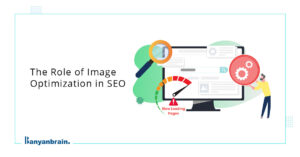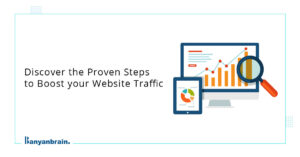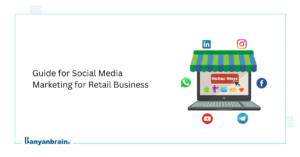Programmatic advertising has completely transformed the digital marketing landscape through the automation of buying and selling ad inventory with advanced technology and data analytics. Also, this new approach helps advertisers reach their target audiences with unprecedented precision and efficiency, using real-time bidding to secure ad placements in milliseconds.
Marketers can maximize their campaigns through DSPs and SSPs, enabling them to make the best decisions based on user behavior, demographics, and preferences so that their message reaches the right consumer at the right time.
Even though programmatic advertising has many advantages, including cost-effectiveness and scalability, it has its downsides, including ad fraud and transparency concerns. In this dedicated article, we will learn more about programmatic media buying, its best practices, and its benefits that can help advertisers buy media buying places and place their online advertising for higher engagement.
What is programmatic advertising?
Programmatic ad buying and selling are automatic ways of trading digital advertising space. This approach automates the ad buying and selling process through the use of technology and data, hence making ad buying more efficient and effective.
Unlike traditional means of advertising, which often rely on direct deals and manual negotiations between an advertiser and a publisher, programmatic advertising uses algorithms and real-time bidding to execute a transaction. Such automation gives a chance for precise targeting of a specific audience to advertisers, leading to ad spend optimization and delivering maximum ROI.
It is primarily real-time bidding (RTB), where an advertiser places a bid for ad impressions in real-time auctions, which enables the advertiser to target a specific audience precisely. Advertisers manage their campaigns through demand-side platforms advertising and set targeting parameters, whereas publishers sell their ad inventory using supply-side platform (SSP) ads. This approach improves efficiency, facilitates data-driven targeting, and enables real-time optimization of ad spending for better performance in digital marketing campaigns
The core of programmatic advertising lies in its ability to analyze vast amounts of data to identify the best opportunities for ad placements. It is one of the best online marketing tips for businesses using data-driven insights, advertisers can target their desired audience with the right message at the right time and place so the message resonates with potential buyers.
This approach not only increases targeting capabilities but also enhances the overall effectiveness of the advertising campaign.
Benefits of programmatic advertising
Programmatic ads provide several benefits that improve digital marketing campaigns’ effectiveness and connect with reliable online marketing services for the best results. Here are some key benefits:
Cost efficiency
- Lower CPM rates: Generally, programmatic advertisements have lower CPM as compared to traditional advertisements and, thus, help to target a more substantial number of people for the same amount of money.
- Budget flexibility: The marketers can create daily budgets that automatically adjust in real-time to ensure peak spending. This ensures spending when it matters most.
More ad targeting power
- Granular targeting: Audience segmentation is possible through the marketer to target the audience through various parameters such as demographic, behavior, and location, thus providing an extremely targeted ad placement.
- Real-time data use: Accessing real-time data allows the marketer to adjust campaigns in situ, ensuring optimal ad positioning and messaging in line with trending behavior and consumer activity in the marketplace.
Expand reach and brand awareness
- Reach all channels: Programmatic ads can appear across more platforms and formats (display, video, audio, and even connected TV) than before, thereby increasing a personal brand’s awareness.
- Increased audience reach: A vast marketplace of publishers gives advertisers access to a diverse audience, greatly increasing the number of possible customers.
Transparency and tracking
- Transparency in campaign performance: Marketers know where their ads are being placed and who is viewing them, giving insight into how effective their campaigns are.
- Performance metrics: Being able to track KPIs will allow advertisers to make better decisions for future campaigns, knowing the ROI for the ads.
Programmatic advertising terms and concepts
Understanding programmatic buying advertising requires knowledge of several key terms and concepts.
Real-time bidding: The process of buying and selling ad impressions in real-time ad auctions. Every time a user visits a website, an auction occurs in milliseconds, in which the opportunity to display ads is further auctioned among advertisers to show them to the particular user.
Demand-side platform (DSP): A DSP digital marketing is an advertising technology platform that enables advertisers to buy ad inventory from multiple sources with a single interface. It provides features for managing campaigns, setting targeting parameters, and optimizing bids.
Supply-side platform: SSP advertising is an ad inventory management platform that helps publishers maximize revenue. It creates an avenue for publishers to sell their ad space to multiple ad exchanges and demand-side platform (DSPs) ads.
Ad exchange: An ad exchange is an online hub where advertisers and publishers can buy and sell ad inventory in real time. It acts as an intermediary between DSPs and SSPs, enabling the auction process.
Targeting: All programmatic ad solutions include targeting options such as demographic, behavioral, contextual, and retargeting. These ensure reaching audience groups with certain interest patterns, behaviors, other action characteristics, and age and gender attributes.
Attribution: Attribution refers to the process of determining which touchpoints in a customer’s journey contributed to an increasing conversion rate. In programmatic advertising, attribution models help advertisers understand the effectiveness of their campaigns and optimize future strategies.
Viewability: This metric shows whether an ad was actually seen by a user. Viewability is important to assess the effectiveness of an ad campaign and ensures that advertisers are paying only for ads that have the potential to be seen.
Frequency capping: This method restricts the number of times a user is exposed to the same ad within a time frame. Also, frequency capping helps prevent ad fatigue and guarantees a better user experience.
What’s the difference between programmatic and display ads?
Although many people use the terms interchangeably, programmatic and display advertising are different. Display advertising refers to visual ads on websites, apps, or social media platforms. Display ads can be banners, videos, or rich media, among other formats.
The main difference lies in the buying and selling method of ad space. Display advertisingMoreover, by using programmatic advertising through can be directly bought from publishers through traditional methods, including direct deals or negotiated contracts. In contrast, programmatic ad buying automates this process with technology, allowing RTB marketing and more sophisticated targeting.
Another distinction is the level of data utilization. Buying programmatic ads heavily relies on data analysis for decision-making, optimization, and targeting. Display advertising can also use data but may not always tap into that same level of automation and real-time insights.
In other words, all programmatic ads could be referred to as display ads, but not all display ads are programmatic. What makes programmatic different from other forms of traditional display ad methods is its automation, efficiency, and data-driven nature.
Programmatic advertising platforms
Programmatic ad inventory buying and selling require crucial tools known as programmatic advertising platforms. The general categories of such programmatic ad platforms include:
Demand-side platforms (DSPs): As mentioned earlier, DSP marketing allows advertisers to purchase ad inventory from various sources. They provide tools for marketing campaign management, audience targeting, and performance tracking. Advertisers can set budgets, adjust bids, and analyze campaign performance through these platforms.
Supply-side platforms, or SSPs: Aid publishers in managing their ad inventory and guaranteeing the best possible revenue. SSPs connect publishers with numerous ad exchanges and DSPs, enabling them to sell their ad space more effectively. SSPs also provide insights into inventory performance and help publishers optimize their pricing strategies.
Ad exchanges: Ad exchanges are the venues where advertisers and publishers transact. They facilitate real-time auctions in which advertisers bid for ad impressions, and publishers sell their inventory to the highest bidder. Ad exchanges are important parts of the programmatic ecosystem, acting as intermediaries between DSPs programmatic as well as SSPs.
In a highly digital marketplace, businesses require programmatic advertising for the improvement of marketing efficiency and effectiveness. This automated process can target the audience precisely, and real-time bidding allows them to make data-driven decisions to reach their ideal audiences at the right time. Moreover, by using programmatic advertising through a trusted PPC company, businesses can maximize their advertising budget, increase the return on investment, and adapt quickly to changing consumer behavior. With this analysis capability, strategies can be honed for better results as one can monitor campaign performance in real time.
Banyanbrain is a leading digital marketing company that can help your business with the best marketing strategies to help your business gain more traffic on your website. Contact us for the best marketing services.
FAQs
What is real-time bidding in programmatic advertising?
Real-time bidding is an auction-based method whereby advertisers bid for ad space as users visit the websites. The entire operation takes place in milliseconds to allow advertisers to reach a very specific audience. Ad positioning in RTB is driven by targeting user data to optimize for relevance and return on investment.
How to implement programmatic advertising?
To implement programmatic advertising:
- You must first establish the goals of your campaign and define your target audience.
- Next, work with a demand-side platform (DSP) for managing bids and placements of ads.
- Install tracking and analytics to monitor activity.
- Third, continue optimizing campaigns based on data insights to improve effectiveness and reach the desired outcome.
What are demand-side platforms?
A software solution that enables the advertisers to purchase ad inventories across multiple ad exchanges through just one interface. It is an automated bidding platform so the advertisers can target specific audiences, manage their budgets, and analyze the campaign’s performance in real time. This real-time functionality adds to the efficiency and effectiveness of programmatic advertising.
How does header bidding work?
Header bidding is a form of programmatic advertisement that allows publishers to offer their inventory to many other ad exchanges instantly before making a call to their ad server. This enhances competition for advertisement space, maximizing revenue. The advertiser places bids for the respective space, and the highest bidder wins; this ensures better monetization for the publisher.






